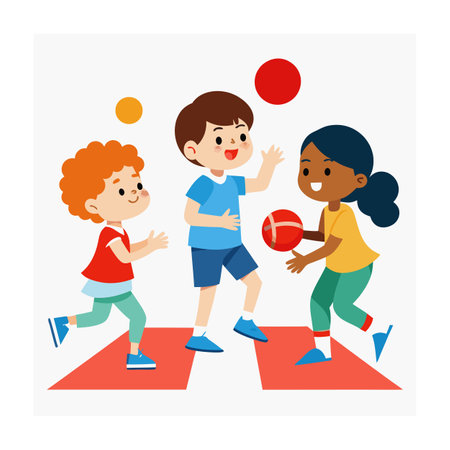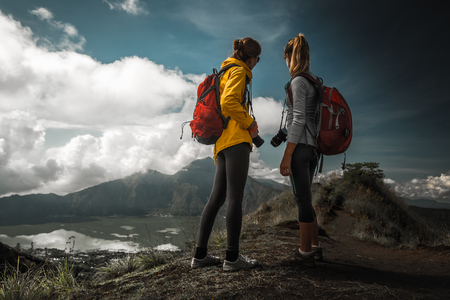1. Why Hike with Kids: Benefits and Family Bonding
Physical, Mental, and Emotional Benefits of Hiking with Children
Taking your kids hiking in the U.S. is about so much more than just getting out in nature—its a chance to help them grow in all sorts of ways. Whether you’re walking through a local park or exploring one of America’s stunning national parks, hiking offers unique advantages for kids and families alike.
Benefits of Hiking for Kids
| Type of Benefit | How Hiking Helps |
|---|---|
| Physical Health | Builds strong muscles and bones, improves coordination, boosts heart health, and increases overall fitness. |
| Mental Well-Being | Reduces stress, encourages mindfulness, sharpens focus, and helps kids feel calmer and happier. |
| Emotional Growth | Promotes confidence as children accomplish new trails, nurtures curiosity about the world, and teaches resilience. |
| Social Skills | Encourages teamwork, communication, and problem-solving when hiking together as a family or with friends. |
Building Stronger Family Connections Outdoors
Hiking brings families together in ways that screens and daily routines can’t. Sharing an adventure on the trail means everyone faces challenges side by side—from crossing creeks to spotting wildlife or reaching a scenic overlook. These shared experiences create special memories and traditions your family will cherish for years to come.
Ways Hiking Strengthens Family Bonds
- Quality Time: Away from distractions like phones and TV, families have real conversations while walking together.
- Teamwork: Kids learn to help each other and their parents by sharing snacks, reading maps, or finding the best path.
- Cherished Memories: Exploring new places together makes lasting stories that become part of your family’s history.
- Lifelong Love of Nature: Regular hikes help children appreciate the outdoors and become good stewards of our public lands.
The American Experience: Hiking Across the U.S.
The U.S. offers endless opportunities for families to connect through hiking—whether it’s watching sunrise in Yosemite, discovering waterfalls in the Smoky Mountains, or enjoying wildflowers along Midwest trails. No matter where you are in America, there’s a trail ready to welcome your family into nature’s embrace.
2. Top Kid-Friendly Hiking Destinations Across the U.S.
Exploring the outdoors with kids is a special adventure, and the United States is packed with amazing parks and trails that are perfect for families. Whether you’re looking for easy strolls, stunning landscapes, or parks with awesome amenities like playgrounds and visitor centers, there’s a spot for every family. Here are some of the best kid-friendly hiking destinations across America to help you plan your next family outing.
Why Choose Family-Friendly Trails?
Kid-friendly hikes are designed with younger explorers in mind. They often feature gentle terrain, shorter distances, fun things to see, and facilities that make outings easier for parents and kids alike. Choosing the right trail helps ensure everyone has a great time and stays safe on the journey.
Favorite Family Hiking Spots by Region
| Region | Park/Trail | Highlights | Amenities |
|---|---|---|---|
| West | Yosemite National Park (CA) Mirror Lake Trail |
Paved path, mountain views, seasonal wildflowers | Restrooms, picnic areas, shuttle buses |
| Southwest | Zion National Park (UT) Riverside Walk |
Paved riverside walk, wildlife sightings, splash zones | Shuttle service, water stations, ranger programs |
| Midwest | Cuyahoga Valley National Park (OH) Ledges Trail |
Rock formations, shaded paths, scenic overlooks | Visitor center, restrooms, picnic spots |
| Southeast | Great Smoky Mountains National Park (TN/NC) Laurel Falls Trail |
Paved path to waterfall, lush forest setting | Parking lot, restrooms nearby, interpretive signs |
| Northeast | Acadia National Park (ME) Jordan Pond Path |
Lakeside views, wild blueberries in summer, flat terrain | Café at trailhead, bathrooms, bike rentals |
| Pacific Northwest | Mount Rainier National Park (WA) Nisqually Vista Trail |
Paved loop trail with wildflowers and volcano views | Visitor center, restrooms, picnic tables |
| Southeast Urban Escape | Piedmont Park (Atlanta, GA) | Paved walking paths, playgrounds, duck pond | Cafés nearby, restrooms, splash pad in summer |
| Western City Hike | Griffith Park (Los Angeles, CA) | Mild trails with city views and the Griffith Observatory close by for learning fun | Bathrooms, playgrounds, picnic areas |
| Nationwide Favorite | The American Discovery Trail | The first coast-to-coast non-motorized trail in the U.S.—choose short family sections in each state! | Varies by location: many have parking lots and rest stops along the way |
Parks with Extra Perks for Kids
- Junior Ranger Programs: Many national parks offer hands-on activities where kids can earn badges while learning about nature.
- Nature Centers: Interactive exhibits give little hikers a chance to touch fossils or learn about local wildlife before heading out on the trail.
- Paved & Stroller-Friendly Trails: Look for parks that highlight these options on their maps if you have younger children.
- Biking Options: Some parks also allow bikes or scooters on certain trails—great for variety!
- Splash Pads and Playgrounds: After a hike, let kids cool off or burn more energy at park play areas.
A Few Tips When Choosing a Trail:
- Select routes under three miles for beginners or young kids.
- Avoid steep elevation changes unless your child is experienced or enjoys a challenge.
- Parks with shade are ideal in summer months.
- If traveling with toddlers or babies, check if trails are stroller accessible.
- Amenities like water fountains and restrooms can make all the difference!
Ready to Explore?
No matter where you live in the U.S., there’s an exciting family hike waiting nearby. With so many choices—whether you love waterfalls, forests, lakesides or city parks—it’s easy to find a trail that fits your crew. Grab some snacks and water bottles, pack a sense of adventure, and hit one of these top kid-friendly destinations together!

3. Essential Gear and Packing Tips for Family Hiking
Must-Have Hiking Gear for Kids and Parents
When it comes to hiking with kids in the U.S., being well-prepared with the right gear is key to having a fun and safe adventure. Here’s a handy table of essential items every family should bring along on the trail:
| Gear | Why It’s Important | Pro Tips |
|---|---|---|
| Comfortable Hiking Shoes | Prevents blisters and slips on uneven trails | Choose shoes with good grip; let kids break them in at home first |
| Weather-Appropriate Clothing (Layers) | Keeps everyone warm, dry, or cool as needed | Packing layers helps you adjust to changing weather quickly |
| Backpack (Child-sized & Adult-sized) | Makes it easier to carry personal items and snacks | Let older kids carry their own small pack—it builds confidence! |
| Sun Protection (Hats, Sunglasses, Sunscreen) | Protects skin and eyes from UV rays, especially at higher altitudes | Reapply sunscreen every 2 hours, even on cloudy days |
| First Aid Kit | Treats minor cuts, scrapes, or bites fast | Add kid-friendly bandages and allergy medicine if needed |
| Navigation Tools (Map, Compass, or GPS) | Avoids getting lost on unfamiliar trails | Teach older kids basic map reading skills for extra fun! |
| Bug Spray & Wipes | Keeps mosquitoes and ticks away—especially in summer months | Packed wipes are great for sticky hands or quick cleanups too |
| Trekking Poles (Optional) | Gives extra balance on rocky paths or steep climbs | Lighter, adjustable poles work best for little hikers |
| Ponchos/Rain Jackets | Keeps everyone dry during sudden downpours or morning mist | Ponchos are easy to pack and fit all ages comfortably |
| Emergency Whistle/ID Tags for Kids | Makes it easier to find each other if separated on the trail | Teach kids how and when to use their whistle before you go! |
Packing Light but Prepared: What to Bring (& Leave Behind)
- Plan ahead. Check the trail difficulty and length—if you’re hiking with younger kids, skip unnecessary extras like heavy books or electronics.
- Pack multi-use items. A lightweight blanket can serve as a picnic spot or an emergency wrap.
- Use zippered bags. Organize snacks, first aid supplies, and extra clothes to make quick changes easier.
- Weigh your packs. Kids should carry no more than 10-15% of their body weight; parents can help by carrying shared items like water and food.
Trail Snacks, Hydration, and Comfort Tips for Families
Healthy Snack Ideas for Kids On the Go:
| Snack Type | Description & Benefits |
|---|---|
| Dried Fruit & Trail Mixes | Packed with energy-boosting carbs; easy for little hands to grab mid-hike. |
| Sliced Apples/Oranges & Nut Butter Packets | Crisp fruits plus protein—no refrigeration needed! |
| Cereal Bars or Granola Bars (Low Sugar) | No-mess snacks that fit easily in any pocket or pouch. |
| Cubed Cheese & Whole Grain Crackers | A salty snack with lasting energy—just watch out for hot days! |
The Importance of Hydration:
- Packing enough water is critical—aim for at least one half-liter per hour per person on moderate hikes. For longer or hotter hikes, bring even more.
- Younger children may need frequent water breaks; bring fun kid-friendly bottles or hydration packs to encourage sipping.
Keeping Everyone Comfortable:
- Pace yourself! Take plenty of breaks in shaded spots so nobody gets overheated or tired out too soon.
- Bandaids for blisters, extra socks in case of puddles, and small towels are lifesavers on family hikes.
- If your child uses a comfort item like a stuffed animal or favorite hat, let them bring it along—it can make a big difference when energy runs low.
The right gear and thoughtful packing can turn any hike into an unforgettable family adventure. With these tips, you’ll be ready to hit American trails with confidence—and plenty of smiles!
4. Safety First: Trail Prep, Wildlife, and Emergency Know-How
Trail Preparation: Start Off Right
Before you hit the trail with your kids, preparation is key. Choose trails that match your familys experience and fitness level. Always check the weather forecast and pack accordingly—layered clothing works best for changing conditions. Make a checklist of essentials like water, snacks, hats, sunscreen, bug spray, and a simple first-aid kit. Let someone know where you’re going and when you expect to be back.
Trail Prep Checklist for Families
| Item | Why It’s Important |
|---|---|
| Water Bottles | Staying hydrated prevents fatigue and heat-related issues. |
| Healthy Snacks | Keeps kids’ energy up during the hike. |
| Sunscreen & Hats | Protects from sunburn, even on cloudy days. |
| Bug Spray | Avoids discomfort from bites or stings. |
| First-Aid Kit | For quick care of scrapes or blisters. |
| Map or GPS App | Prevents getting lost on unfamiliar trails. |
| Rain Jackets/Ponchos | Keeps everyone dry in case of sudden showers. |
Wildlife Encounters: Be Aware, Not Afraid
The U.S. is home to amazing wildlife—from deer and squirrels to bears and snakes. Teach kids never to approach or feed animals. Make noise as you walk so animals know you’re coming; this helps avoid surprising them. Learn about the animals in your hiking area and what to do if you see them. For example, if you spot a bear, remain calm, speak softly, back away slowly—never run.
Common Wildlife & How to Respond
| Animal | What To Do If You See One |
|---|---|
| Bear | Stay calm, group together, back away slowly. |
| Snake | Give it space, don’t try to touch or move it. |
| Deer/Elk | Enjoy from a distance; don’t approach fawns. |
| Coyote/Wolf | Stand tall, make noise, never run away. |
| Ticks/Insects | Wear long sleeves/pants; check for ticks after hikes. |
Know Local Regulations: Stay Legal & Safe
Different parks have their own rules—some require permits for parking or entering certain areas. Dogs may need to be leashed at all times. Fires might be banned due to wildfire risk. Before heading out, check the official website for the park or forest you’ll visit so there are no surprises. Following local guidelines keeps your family safe and protects nature for everyone to enjoy.
Basic First-Aid Essentials Every Parent Should Know
Bumps and scrapes happen—especially with kids! Knowing how to treat minor injuries helps keep everyone calm. Pack adhesive bandages, antiseptic wipes, tweezers (for splinters), allergy medicine (if needed), and an emergency whistle. Teach your children how to use a whistle (three blasts means help) in case they get separated from the group. It’s also helpful for adults to know basic CPR and how to handle twisted ankles or mild allergic reactions until help arrives.
First-Aid Kit Essentials Table
| Item | Description/Use |
|---|---|
| Bandaids/Adhesive Bandages | Covers cuts or blisters. |
| Antiseptic Wipes/Creams | Cleans wounds to prevent infection. |
| Tweezers | Removes splinters or ticks safely. |
| Ankle Wrap/Bandage Roll | Treats sprains or strains temporarily. |
| Allergy Medicine (e.g., Benadryl) | Eases allergic reactions from plants/insects (check with your pediatrician). |
| Sunscreen & Bug Spray (travel size) | Adds extra protection while on the go. |
Your Kids’ Hiking Safety Is Your Best Adventure Tool!
If you take some time before each hike to prepare your gear, learn about local wildlife, respect regulations, and brush up on basic first aid, every adventure can be safer—and way more fun—for your family!
5. Making it Fun: Games, Learning, and Nature Engagement
Hiking with kids in the U.S. isn’t just about reaching the summit—it’s about creating an adventure packed with fun, discovery, and hands-on learning. Keeping children engaged on the trail can be easy if you mix in interactive games, DIY activities, and opportunities for them to connect with nature. Here are some creative ways to make every hike memorable and educational.
Trail Games to Keep Kids Moving
| Game | How to Play | Why Kids Love It |
|---|---|---|
| Nature Scavenger Hunt | Create a list of things to find (like pinecones, animal tracks, or a red leaf) and see who spots them first! | Makes kids observant and turns hiking into a treasure hunt. |
| I Spy | One person picks something along the trail (“I spy something green!”), and others guess what it is. | Easy, requires no supplies, and keeps little minds active. |
| Trail Charades | Pretend to be animals you might see on the hike; others guess which animal you’re imitating. | Encourages imagination and plenty of laughs. |
| Silly Storytelling | Take turns adding sentences to create a wild hiking story together as you walk. | Keeps kids chatting and entertained on longer stretches. |
DIY Activities for Young Explorers
- Leaf Rubbing Art: Bring along crayons and paper. Find leaves on the trail, place them under the paper, and rub over them with crayons to reveal their patterns.
- Build a Fairy House: Use fallen sticks, rocks, and leaves to construct tiny homes for woodland creatures (always use only natural materials that have already fallen).
- Nature Journaling: Pack a small notebook for each child to draw what they see or write down cool discoveries. Encourage sketches of birds, bugs, or interesting plants!
- Pebble Towers: See who can stack the tallest tower from flat stones found along the path (be sure not to disturb habitats or park rules).
Turning Hikes Into Learning Adventures
Educational Moments on the Trail
- ID That Plant: Download a plant identification app or bring a simple field guide. Let your child lead the search for new flowers or trees.
- Map Skills: Give your child a map of the area. Have them help navigate by pointing out landmarks or trail signs—real-life problem solving!
- Wildlife Watch: Spotting squirrels, deer, or birds? Talk about their habitats and how they live in U.S. forests or parks.
- Themed Hikes: Pick a theme before you go (like “shapes in nature” or “colors of fall”) and challenge your child to spot related items during the walk.
Tips for Making Every Hike Memorable
- Praise curiosity—let kids stop often to touch bark, look under rocks (safely!), or ask questions.
- Pace is everything—kids will enjoy hiking more if you keep things relaxed and playful rather than rushing toward a destination.
- Celebrate small wins like reaching a cool lookout or finding an unusual bug; take photos so your child feels proud of their outdoor achievements.
- If energy lags, break out a favorite snack at scenic spots or invent silly songs about the hike—you’ll keep spirits high all day long!
The key to hiking with kids across America is making every trip an adventure where learning and laughter come naturally. With these games, activities, and engagement ideas, your family hikes will become treasured stories in no time!


